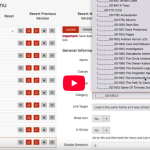
September 1,2022
How You Can Expand Your Businesses With Hybrid Ecommerce
After the boom that ecommerce websites have seen, with record profits being made for many small stores and ecommerce giants, there is a newer method to increase sales and expand the market……Hybrid Commerce!
What is hybrid commerce
Hybrid commerce is a model that’s seeing B2B companies add a direct-to-consumer (D2C) to their website. It provides companies the ability to sell to both individuals as well as in bulk to other businesses. It can help them break into the new markets and with technologies available, there is a lower bar to entry.
Hybrid commerce to put it simply, is selling both Business to Business (B2B) and Direct to Consumer (D2C).
How companies are benefiting from it
When Nike switched to hybrid commerce, deciding to expand out to sell directly to consumers, rather than only to businesses, it helped give the largest profit growth in their history. After launching their own online store, direct-to-consumer sales increased, both digitally and in physical stores increased by 32% by year-end 31 May 2012.
This isn’t to say that only large companies can benefit from doing hybrid ecommerce. Any business that can offer to both B2B and D2C. A business can expand it’s customer base and open up a whole new market of customers.
Why to look into hybrid commerce
By implementing hybrid ecommerce allows companies to scale up and drive further growth, expanding their target customer base. For a business that manufacture their own items, they can increase their margins on a per unit basis when selling D2C.
It can also help to streamline the order process for all customers, all customers can be driven to order online, allowing easier management of orders.
Drawbacks of hybrid ecommerce
There will be an increase in the amount of website management required. Everything will need to be updated twice, for example; if the cost to acquire/produce a product increases, causing the sale price point to increase, both the B2B and B2C prices will be updated.
B2B will be looking for and value different elements to B2C (and vice versa). Product descriptions and even images will need to be tailored to the type of customer you are appealing to. This will require extra time and effort to understand what this is and get the necessary content for the website.
What’s needed for a hybrid ecommerce website
Different pricing for B2B than B2C
Tools that will help facilitate, separate pricing, preferably that the B2C customers can’t access without being a vetted/verified B2B customer.
Additional checkout options
When selling to B2C, they expect to provide payment details for their order at the point of checkout. Businesses on the other hand, will expect a larger array of checkout options, including paying on account, BACS, bank transfer and paying by cheque for example.
Minimum order values
This is useful or even essential for some websites, for ensuring that B2B customers who place orders are putting large enough orders to warrant being seen as a B2B order and thus the trade prices, for example, only orders of £1,000 or more before they can checkout.
However, this functionality can also be used to great effect with B2C, making it a hurdle based discount, such as offering free delivery over £50 a spend.
Tiered discount pricing
Allow B2B customers to receive greater discounts with the more they order, whether this be based on a total cart value, or for ordering a specific product in bulk. This is something that can be used to further enhance the order values of B2B ecommerce websites.
Where to start
When looking at starting to transition into a hybrid ecommerce business, the first thing you will need to consider making your products available to order via a website for both B2C and B2B customers.
There are multiple solutions to do this, the most popular ones being either having two separate websites, one for B2C and another for B2B customers. There are a range of ecommerce solutions for each of these such as Woocommerce, Magento, Shopify as well as others.
The pros for this approach are;
Managing two separate websites gives more control, each website can be tailored to the specific customer type.
Can build both on different systems if required, so that you can use the best solution for the job.
However, the possible downsides you might find are
The need to manage and update two separate websites.
Having to direct people to different sites, depending on the type of customer.
The need to shut off the B2B website from being accessed and used by regular customers.
The extra expense that comes of having two separate sites such as hosting and support.
Another option is having an all-in-one solution, that can handle both the B2C and B2B side of things, where you can both from a single ecommerce system such as Magento.
The benefits of this are;
All data, orders and product management in a single place.
B2B prices can only be accessed behind specific website logins.
You can direct all customers to a single site, regardless of who they are.
The potential downsides, on the other hand are;
You’ll need a system that has the functionality to cater to both B2B and B2C.
The time needed to set up of B2B customer accounts so they can access their trade prices.
The best solution for you will vary based on your business, budget and how you would like to manage them.
If you’d like to discuss your B2B or ecommerce solution, get in touch with us.




